How to become a chef and not screw up: Scientific and artistic recipes
Disclaimer. The editors of The Global Technology magazine insist that this article is for informational purposes only and categorically do not recommend you try any of the recipes provided in it.
If the kitchen has always been a place for bold experiments for you, sometimes you hear what the mixer sings about and even feel the whisper of clean pans, then it’s time to move to the bright side of soup-making to become a real professional in the culinary business.
The editors of The Global Technology magazine have prepared for you several sophisticated recipes that will show you the right way to the hearts of eaters.
Forget everything you know about cooking and face the truth: a hamburger is a mixture of brown and orange with a layer of green and poisonous red accents.
To learn to see the true shades of food, start with the simple and cook a dish from an artist.
The recipe:
- Open the refrigerator
- Take cottage cheese
- Cut bacon into thin slices
- Prepare ketchup
- Mix cottage cheese with bacon and ketchup
- Close the refrigerator
This dish seems very far from cooking, but it can reveal creative talent in you. After all, it was artists who even earlier than cooks discovered that food is not just a means of satiety and taste satisfaction, food is an art woven into everyday life.
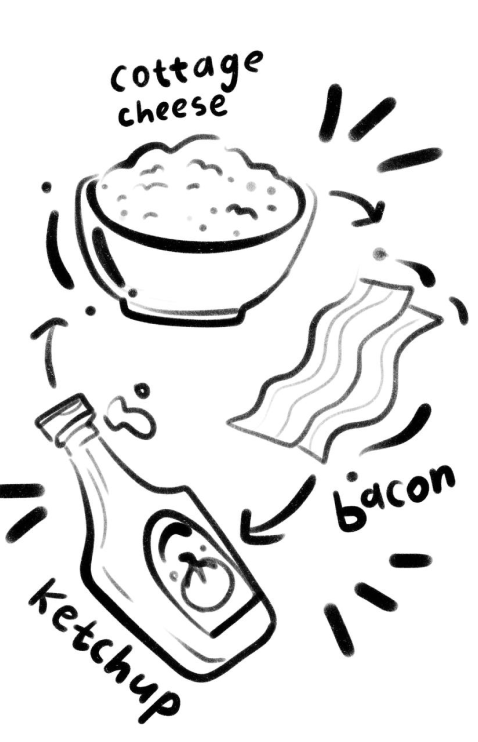
Surely, in the childhood of every artist or cook there was a friend who did not eat pink with white. White with pink, for example, the friend did eat freshly fried ruddy toast with raspberry jam, but didn’t eat pink with white. Well, he did not like this colour combination, so the friend treated the Margherita pizza, where pieces of melted white cheese lay on the pink sauce, with great disdain.
A novice cook would laugh at such a friend for his bad taste and picky eating habits, but a true artist will never laugh at those who do not eat certain colour combinations, because he knows that color affects the perception of taste.
This is evidenced by the rich palette of dyes that food manufacturers use to paint everything — and not out of love for art. Throughout our edible evolution, colour has been used to filter out the unripe and spoiled before taste and smell come into play. It is not surprising that the colour of products is still an important signal when in contact with food.
For example, half of the people who were given a green cherry drink thought they were drinking something of lemon-lime taste like Sprite. In another study, four out of five subjects claimed that the dark drink was sweeter than the light one, despite the same sugar content in the dark and light drinks.
The influence of colour on taste perception must be even stronger than most artists or cooks think. It is enough to recall the experiment with Smarties candies — chocolate balls in multi-coloured glaze. Sweet Smarties balls are identical in composition, except for the orange ones, which use orange chocolate — this is the manufacturer’s gimmick. In one experiment, some volunteers did not know about that — they thought that candies of different colours differ in composition, while others knew that only orange candies differ. When the subjects were given red and green candies to compare, the first group felt the difference twice as often as the second group. If the volunteers were blindfolded, the difference disappeared.
In other words, before eating, everyone feels what they expect to feel.
Scientists from Oxford University went further and proved that colour habits in eating can, for example, vary greatly depending on upbringing and country. They compared two groups of students: British and Taiwanese. The students were shown seven drinks of different colours and asked to guess the taste. The British identified the dark brown drink as cola. In second place, with a huge gap, was, for some reason, cherry, not Pepsi, and in third place was blackcurrant. Among the Taiwanese, the majority identified the same dark brown drink as grape nectar, some participants named cranberry and even mulberry. None of the British answered “grape juice”, and none of the Taiwanese named cola. The other answers differed in a similar way v only water was equally identified by both the Taiwanese and the British.
Color perception depends not only on culture. In the same way, colors play a different role for children than for adults.
Children love colourful food — at least this is what the manufacturers clearly believe in. A few years ago, Heinz ketchup released green ketchup in a playful bottle, and children responded with delight. In the first three years, the company sold 25 million bottles of coloured ketchup — green ones were followed by purple, blue, orange and light blue ketchup. The kids, however, quickly lost interest and the sales ceased.
This seems to be the general fate of any familiar product that suddenly changes its colour — who can remember colourless Pepsi these days?
Is there any meaning in the colourful palette of food? At first glance, yes, if adults try the food. According to research, children’s taste is less affected by colours than adults’ taste. In other words, colour requires experience to mean something — and for children, colour is just colour.
At the University of Pennsylvania, art therapists studied how elementary school students classify objects. It turned out that children are quite good at distinguishing colours, but are very reluctant to use them as categories — that is, a child finds it strange to divide toys into yellow and blue.
But it turned out that food is an exception to the rule. It may be inconvenient for a child to classify toys by colour, but it is very much so for food. Red on white is completely different from white on red, let alone brown. Children do not understand what this or that colour means, but they feel very acutely the fact that food is coloured.
How then do both adults and children reconcile their interest in variety and their reluctance to try anything new? This can be explained from the point of view of evolution. On the one hand, any organism needs to receive as many different nutrients as possible, but at the same time it is necessary to beware of the unknown and potentially poisonous. Apparently, in the conditions of modern nutrition, these two biological programs come into conflict: if visible diversity can be achieved with multi-coloured dyes, then why take a risk and eat something suspicious like a cactus or a snail, for example?
However, both real artists and real cooks can use the trick with dyes to provide their body with vitamins and fibre, and at the same time solve the problem of white on red.
Don’t touch the food while you’re taking another walk around your kitchen. Try to find a balance between the hot pumpkin and the cooling rabbit.
To know in advance all the quirks of future fans of your culinary talent and test their viability, prepare a simple dish from Aristotle.
The recipe:
- Turn on the TV
- Make salty popcorn
- Take out a long-forgotten block of creamy ice cream from the freezer
- Mix salty popcorn with sweet ice cream and boldly step into the gastronomic world
- Or just coat the frog with honey
It would seem, what does Aristotle have to do with the long-studied combination of sweet and salty? But in fact, the concept of “basic tastes” dates back at least to the times of Ancient Greece.
Why is veal with lingonberry sauce a recognised combination, while pasta generously poured with sugar syrup is questionable? Some people drink tea with salad dressing instead of milk and are considered eccentrics, while others abuse prosciutto with hot peppers and sweet pink wine and pass for refined aesthetes. Tea with salad dressing is no less original, but its image suffers from the cult of high prices and abundance. “When it’s tasty, then it’s tasty,” gourmets answer, generously pouring strawberry jam over their sausages, and you can’t argue with that.
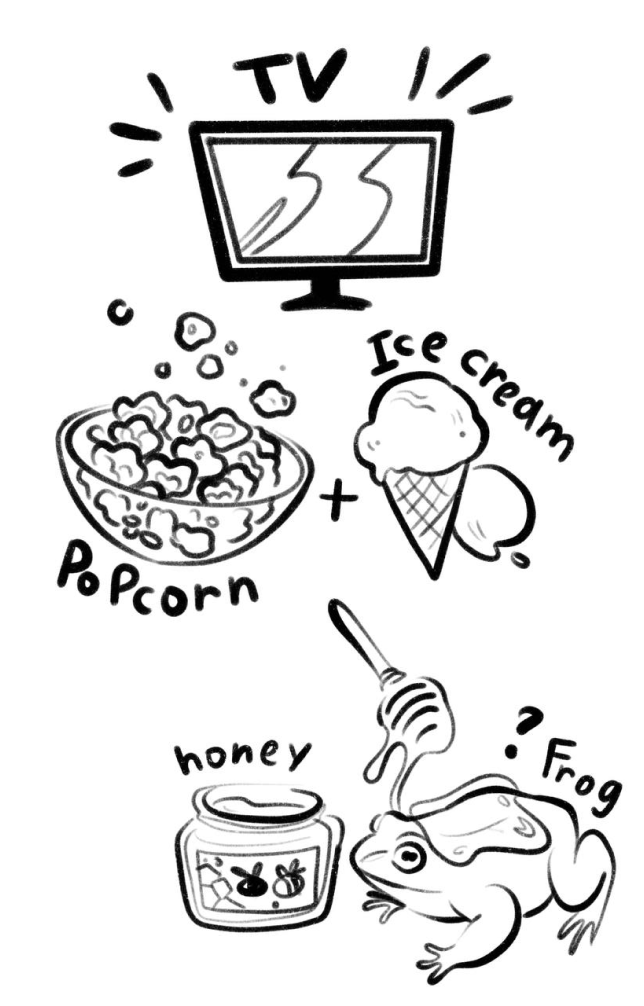
There is no theory of flavour compatibility similar to the theory of colour. Neither nutritionists who are involved in compiling diets from combinations of proteins, carbohydrates and fats, nor gastronomic experts struggling to identify ideal culinary pairs, nor scientists experimenting with finding products with similar smell and taste molecules have yet found a rational explanation for why some products, when cooked or simply placed on a plate together, have a pleasant taste.
Cooks, when inventing a new dish, use a conventional scheme for constructing taste, where taste sensations are only one of the factors.
A person makes the first judgment about a dish based on their own gastronomic experience and associations or the information (if the components of the dish are completely unfamiliar) that is served with the dish. It turns out that the initial reaction “eww” or “I want to eat this” is caused by something that is simply unfamiliar and unexpected. After such information, housewives who, out of helplessness, come up with poetic names for their monotonous barres based on a soup set begin to seem not so funny — an attractive association is more important than the named dish.
And it was not only Aristotle who knew that there are five basic tastes: bitter, salty, sweet, sour and “umami” — meat taste. In various combinations, they are present in a wide variety of products and dishes. Each product has its own smell, and sometimes a whole palette, but not always the combinations of aromas and tastes are perceived the same. This happens due to the so-called retronasal perception, which can be called the aroma in the mouth, or aftertaste. For example, sweet and sour pickled bananas are clearly an acquired taste, but everyone likes juicy sweet and sour cherries.
In addition, the tactile sensations of what you drink and eat are important. The texture of the product, the amount of liquid in it, etc. will affect the sensations in your mouth. It follows that sweet, crispy and juicy watermelon with unleavened bread is quite cool, but creamy Baileys, curled up in a salty tomato, is not.
Ethnic preferences are no less important. In Russia, for example, they really like sweet and sour — they drink tea with sugar and lemon, pickle cabbage with lingonberries. Europeans often play on combinations of salty and sweet — foie gras with berries, aged cheeses with honey. And if you grew up in Greece on certain combinations, then it will not be easy for you to change your preferences. A real cook will have to take this into account.
When preparing food, rely on both your grandmother’s advice and common sense.
Listen to the food, smell the food, and then prepare a dish from mathematicians.
The recipe:
- Open a textbook on higher mathematics
- Take 25 ml of dry sherry
- Take 25 ml of tomato juice
- Take a wide glass
- Fill it with the sherry
- Add some tomato juice to the sherry and continue eating a cactus
Why open a textbook on higher mathematics when preparing this dish? Because it was mathematicians, long before the birth of world cuisine, who decided to figure out: is there a coherent system in cooking that can be measured scientifically and is there a mathematical meaning in established culinary traditions?
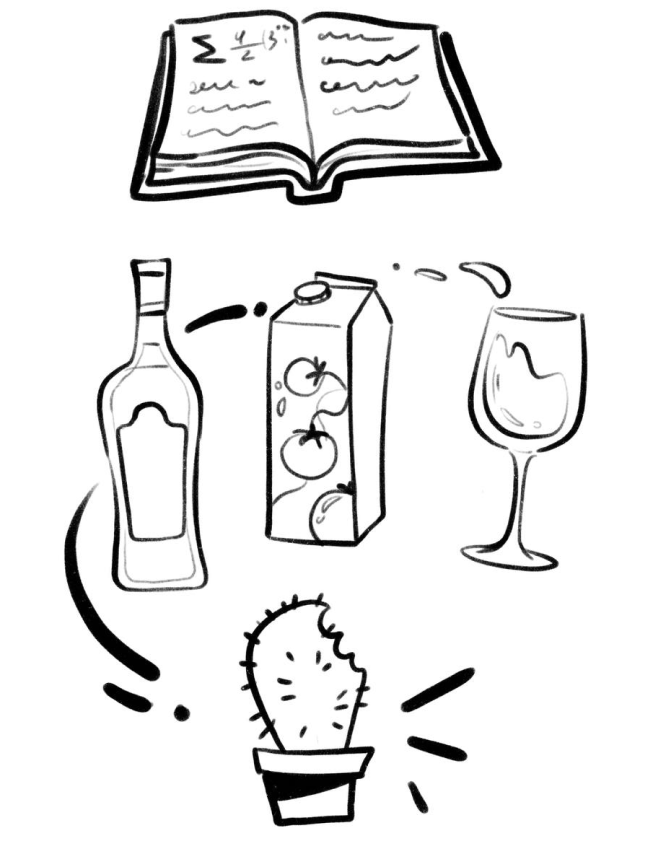
To answer this culinary question from a scientific point of view, mathematicians counted how many recipes there are in the world, they counted how many ingredients are mixed in them and came to the conclusion that something is fishy here: humanity knows about a million more or less established dishes, although there are a billion times more of theoretically possible combinations of products. Then mathematicians assumed that stable combinations should follow some principle, for example: we eat tasty things, we don’t eat bad ones. But then, after long experiments, they came to the conclusion that combinations of products taste better when they contain more of the same flavour substances, or more precisely, flavour-aromatic substances.
The property that ordinary people generally call taste is in fact a combination of taste and smell, and all the subtleties are determined by smell.
Then a group of mathematicians led by Albert-László Barabási in 2011 built a mathematical model of world cuisine — a kind of “culinary network” of all known ingredients, where each product was connected to the most similar ones in “aromatic composition”.
Scientists analysed 56,498 recipes from Western and Eastern sources and compiled a complete list of ingredients. Then they compared the list with data on chemical substances in the composition of different products. Each ingredient corresponded to an average of 51 odorous substances.
With the help of the resulting network, the hypothesis of identical substances could be formally tested and the results were quite unexpected. Western North American cuisine clearly followed the principle of “the more familiar — the tastier.” But in Eastern cuisine, such a dependence was not observed; on the contrary, Asians, as it turns out, prefer ingredients that are far from each other in chemical spectrum.
What gastronomic formulas from the “culinary network” do mathematicians recommend?
Caviar – chocolate = wasted money
Caviar should only be served with chocolate (usually white) — both products contain the odorous substance called trimethylamine. Chocolate, according to the network built by scientists, generally goes with everything: for example, it shares 73 chemical compounds with blue cheeses.
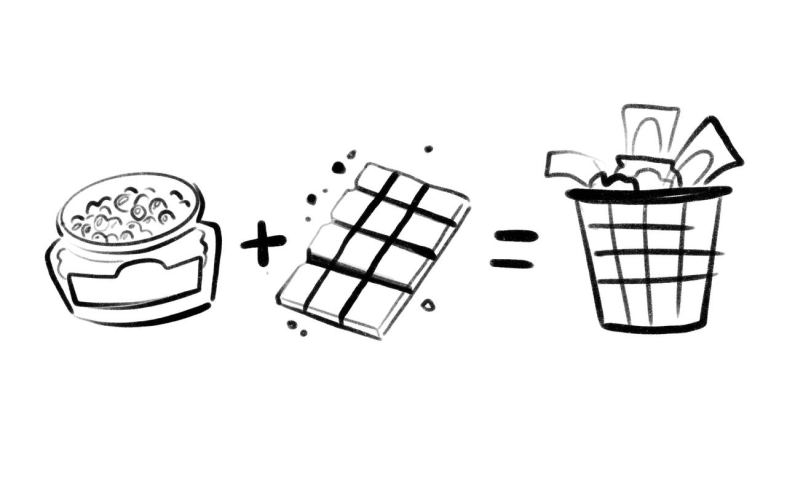
Wine + cheese = a direct way to pleasure
The connection of various cheeses with various wines is the first thing that catches the eye when looking at the “culinary network”. White wine is especially strongly linked with Parmesan — they have a good hundred common odorous chemicals.
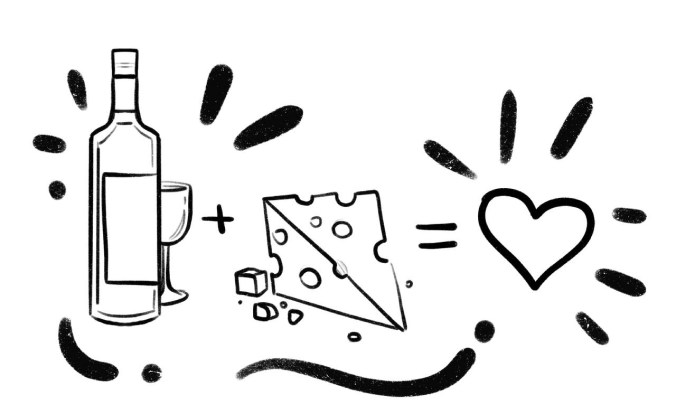
N products + beer = N products + tea
Beer and tea go well with any dish, even with a cactus. What to buy for tea, what to eat with beer — the task, as it turns out, is not difficult: both drinks are comfortably located in the very centre of the network. Remember this the next time someone snorts at your lager that you recommend to jam with gingerbread.
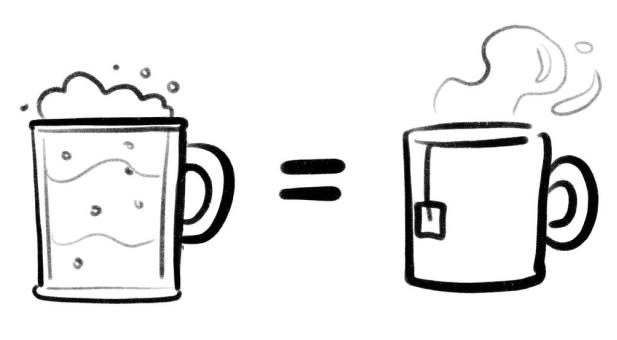
Liver x food = liver
If you have hated liver for all your life, now you have a strong argument. Everything connected with liver is isolated in the culinary network as a lonely island of taste. Liver has no statistically significant intersection with other products.
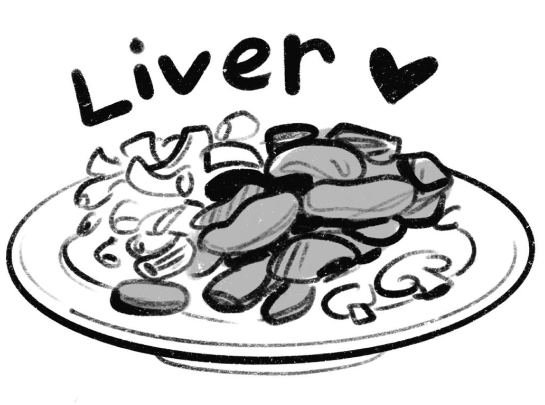
However, if you decide to follow the “culinary network” and forget about liver forever, then you will have to give up mushrooms as well. Mushrooms are not plants or animals. Apparently, this affects their taste composition: different mushrooms are closely intertwined with each other by tastes, but stand apart from all other food.
Try to get rid of outside advisers in the kitchen — this laboratory is yours and only yours.
Weigh the products, study the molecular composition of everything that appears in the kitchen, then proceed to cooking a dish from chemists.
The recipe:
- Turn on relaxing music
- Open the tap with water
- Wash and dry some meat
- Peel a lot of kiwis, cut them into pieces and mash
- Dip the meat in the resulting green solution and let it rest there well
- Change the track, look out the window
- Take out the meat and wrap it tightly in foil
- Heat the oven and put the meat into it
- Look out the window, count the trees
- Take the meat out of the oven
- Enjoy new food compounds
Only chemists could offer such a recipe for cooking meat. Because only chemists know that in order to track energy-chemical reactions, conduct experiments or arrange an explosion, it is not necessary to go to the laboratory, it is enough to go to an ordinary kitchen.
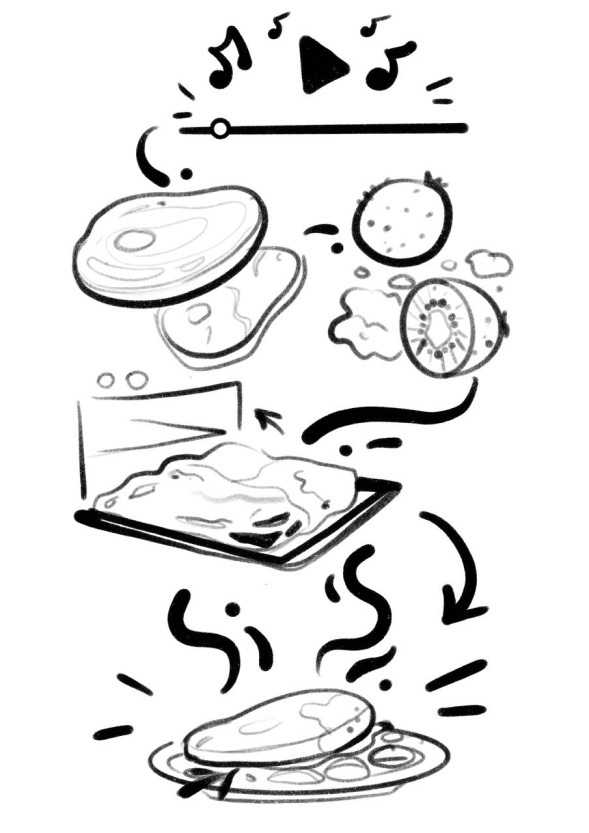
Indeed, while the future cook is tasting the incredible aroma coming from the oven and trying to guess what will cook first — a mind-blowing steak or a crispy bread crust, a real chemist knows that at this moment the “crust” reaction or Maillard reaction is taking place in the oven.
This reaction occurs between sugars and amino acids (proteins) and leads to the formation of new products, the smells and tastes of which we taste and smell. This process was first described by the French chemist Louis Maillard in 1912, but more serious research into the reaction was conducted in 1953 by the American John Hodge.
Sugars and proteins, which, by the way, are present in every product, interact best at high temperatures, which is why a lot of delicious aromas and an appetising crust appear during frying. However, scientists have experimentally found that the Maillard reaction can also occur at 60 degrees Celsius: in addition to the “goldenness” of the product, you also get the preservation of a greater number of vitamins in the products.
The Maillard reaction, by the way, occurs not only during the cooking process — its special case, glycation, can also be noted in the formation of humus in soils, coal and peat. And the “fried crust” reaction also occurs when self-tanning — the active component interacts with the amino acids of skin proteins.
While a real cook bravely prepares the dough for a future lemon pie, pours soda into a measuring spoon and reaches for citric acid on the top shelf of the kitchen cabinet, a real chemist happily rubs his hands in anticipation of a miniature and spectacular explosion.
The reaction here is very simple — thermal decomposition of soda into water and carbon dioxide.
Some cooks first dampen the soda with lemon — why? They say that’s to avoid the soda taste if it does not partially decompose. However, real chemists know that along with that the soda effect disappears. The bubbles are released ahead of time, even before they get into dough. Therefore, there is no point in dampening the soda with lemon or citric acid before adding it to the dough. Instead, you can add so-called baking powder to the dough: then the dough will be fluffy and will bake well without any soda taste.
While a real cook is upset by the sight of spoiled apples, a real chemist is delighted! Of course! After all, at this moment, a real reaction on the edge is occurring in the products which is the oxidation process.
Oxidation is a chain reaction that occurs in the presence of oxygen, which leads to the fact that the food becomes stale and has an unpleasant odour. This can be mainly observed in fruits and vegetables, causing them to darken.
If you cut an apple or an avocado into pieces and leave them untouched for more than an hour, you will notice that their colour has turned brown. This is because the tissue in the apple or avocado pieces is exposed to oxygen from the air, which triggers an enzyme called polyphenol oxidase, hence the brown colour appears.
While a cook is desperately sprinkling sugar on carrots in a frying pan, a real chemist is smiling maliciously, because he knows that food can be made sweet without any sugar, thanks to the process of caramelisation.
Chemists and food technologists use this term to describe the release of sugars from products during cooking and, most importantly, the oxidation reaction of these sugars. When combined with oxygen, hundreds of different substances are formed (some have not even been studied properly), and that sweet divine taste appears.
The same thing happens in vegetables when baked in the oven and when fried, sautéed in vegetable oil. As soon as the juice evaporates from the vegetables, the remaining sugars caramelise and give the product a new pleasant aroma.
While the cook tries to understand why the consommé does not thicken and changes colour, a real chemist opens a school textbook that describes the destruction and denaturation of proteins.
Denaturation is a chemical or temperature change in the spatial structure of proteins, in which the protein formula does not change, but the arrangement of the molecule changes. This is why an egg turns from transparent to white, and fish or meat change their colour to a lighter one. The taste, of course, also changes. By the way, it becomes easier for the stomach to digest protein denatured in any way.
But the destruction of protein is the basis for the preparation of broths, jelly, marmalade, jellied meat and aspic. The fact is that meat contains the structural protein collagen, which gives rigidity to meat products and, accordingly, requires long-term processing methods. Collagen in the process of thermal destruction, under the influence of high temperature, turns into gluten.
The broth turns out tastier when it has more gluten, but the gluten must be allowed to boil out of the meat or fish. Bones and cartilage are a particularly good source of this substance — they contain a lot of collagen, which, when boiled, breaks down into gluten, and gives broths that satiety for which we value them.
Experiment! There are thousands of incomprehensible, but terribly important substances in food, which don’t even have names yet, and in general, it’s not only the chemical composition that’s important, but also the well-being of the intestinal microflora, the glycemic index, texture and consistency… But no product should baffle you!
Study the tastes, smells, colours and other components of food. And after a deep study, cool down with an eggplant dish and finally smile!
The recipe:
- Open your chef’s jacket and take off your chef’s cap
- Take an eggplant and remember where you’ve put the garlic cloves
- Fry the unpeeled eggplant with the peeled garlic cloves in the oven or on the grill
- Put them aside to cool them
- Fantasize, dream, go for a walk
- Cut the cooked eggplants and puree them with the garlic
- Season the puree with soy sauce
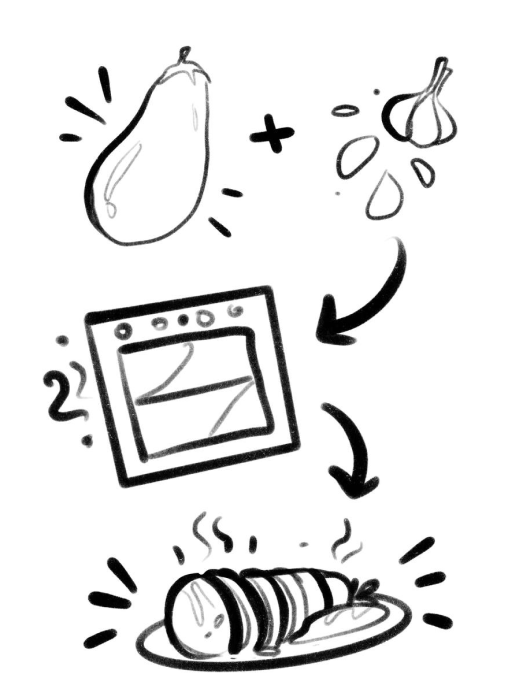
Smile:
Once a student from Vietnam found himself in London and decided to take a walk to the local market — soak up the local flavour and buy a chicken to make chicken soup with rice and lemongrass for his roommates and for himself. He was really missing his homeland.
The student walked between the rows and stalls, marvelled at the huge number of steaming plates of Indian curry, tried real British pies, put 300 grams of fresh cheese in his backpack and remembered that he did not know how to say in English: “I need chicken.”
Then the student went up to the egg seller, took one egg from his net, and began to approach each stall in turn and demand from the sellers:
“Show me its mother! Show me its mother!”
Is there life on Mars, or is there no life on Mars? Join the eternal debate on paradoxes!
Thank you!




